Have you ever walked into a room and felt like it was more than just visually appealing? Like it was doing something good for the planet? Well, that's probably because it was designed with sustainability in mind. Sustainable interior design is not just a buzzword; it's a necessity in today's world.
Why is it so crucial? As the renowned scientist Carl Sagan once said, "The Earth is the only world known so far to harbor life." We are currently grappling with significant environmental issues, from climate change to the depletion of natural resources. These challenges aren't abstract; they're very real and happening now. In my own experience, making small changes in my living space has made me feel like part of the solution rather than the problem.
That's why we're delving into the subject of sustainable interior design today. We aim to provide you with a comprehensive understanding of what it entails, why it's important, and how you can incorporate it into your own living or working spaces. So, let's begin, shall we?
What is Sustainable Interior Design?
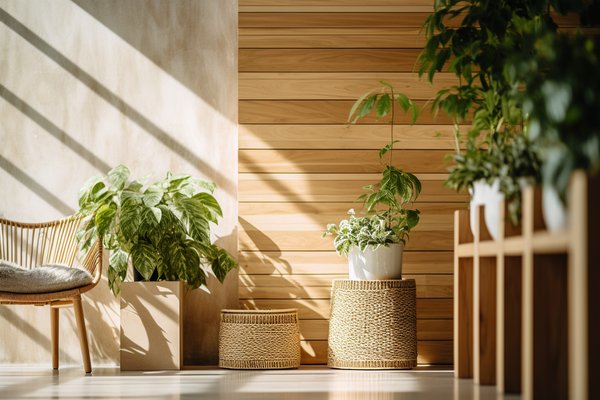
Sustainable interior design is the art of designing interior spaces in a way that reduces negative impacts on the environment. Simple as that. But don't let the simplicity fool you; the implications are huge.
The Significance in Modern Living
Imagine a world where every piece of furniture, every material, and even the paint on the walls contribute to a healthier planet. Sounds like a dream, right? But it's entirely possible, and it's becoming more popular every day. Sustainable interior design is not just about being eco-friendly; it's about creating spaces that are healthier for us and future generations.
So, why should you care? First off, sustainable design practices can actually save you money in the long run. Think energy-efficient lighting and long-lasting materials. Secondly, it's a step towards social responsibility. We all share this planet, and it's high time we started acting like it.
Key Principles
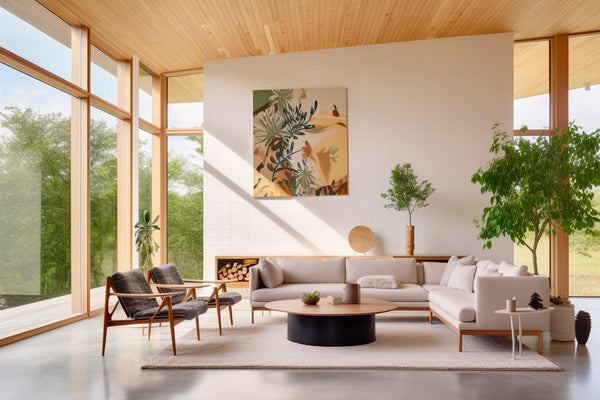
Energy Efficiency
First up is energy efficiency. Now, you might be wondering, "How does saving energy help the planet?" Great question! When you optimize energy use, you're essentially reducing the demand for electricity. And less demand means fewer fossil fuels burned, which translates to less pollution. It's a win-win!
According to the Design Institute of San Diego (DISD), there are three fundamental principles of "green" interior design: energy efficiency, resource conservation, and health. Energy-efficient design could mean anything from installing LED lights to using smart thermostats that learn your habits and adjust accordingly.
Resource Conservation
Next on the list is resource conservation. This is all about using materials that are either recycled or sustainably sourced. Think bamboo flooring instead of hardwood, or recycled glass countertops. The idea is to minimize waste and make the most of what we have.
Health and Well-being
Last but definitely not least, we have health and well-being. Sustainable design isn't just good for the planet; it's good for you too! Using non-toxic materials and maximizing natural light are just a couple of ways to create a healthier living space.
Why Does Sustainable Interior Design Matter?
Environmental Impact
First and foremost, it's about the environment. Traditional interior design methods often involve materials and processes that are harmful to the planet. We're talking about things like volatile organic compounds (VOCs) in paint or the unsustainable harvesting of wood. Sustainable design aims to minimize these negative impacts.
Long-term Cost-effectiveness
But it's not just about being eco-friendly. Believe it or not, sustainable design can be cost-effective too! Energy-efficient appliances may cost more upfront, but they'll save you money in the long run. And let's not forget the potential increase in property value.
Social Responsibility
Finally, there's the social responsibility aspect. When you choose sustainable interior design, you're making a statement. You're saying that you care about the planet and the people on it.
Common Myths and Misconceptions
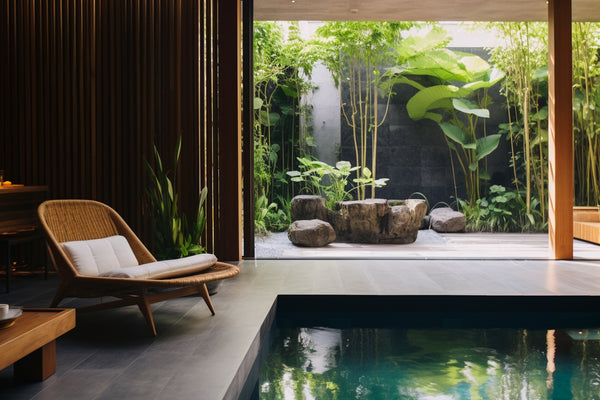
Alright, let's tackle some of those myths and misconceptions that might be holding you back from diving into the world of sustainable interior design.
I, myself believed in these myths until I started buying my own eco-friendly appliances and sustainable furniture. These helped change my life for the better.
Myth 1: It's Expensive
One of the biggest myths out there is that going green will make you go broke. Not true! While some sustainable materials and appliances might have a higher upfront cost, they often pay for themselves in the long run through energy savings and durability.
I got my first eco-friendly washing machine a few years ago. Sure, it was expensive but it has reduced my energy consumption up to 72%. Saved me a lot of money, too!
Myth 2: It's Complicated
Another misconception is that sustainable interior design is too complicated. People think you need to be an expert to make eco-friendly choices. But guess what? You don't! There are plenty of simple changes you can make that don't require a degree in environmental science.
How to Get Started with Sustainable Interior Design
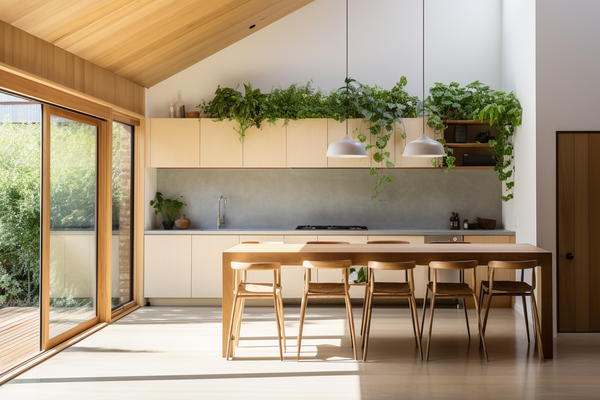
Actionable Tips for Beginners
- Start Small: You don't have to overhaul your entire home to make a difference. Start with small changes like switching to LED bulbs or buying a few indoor plants. I remember when I first started my journey towards a more sustainable lifestyle, the first thing I did was replace all the incandescent bulbs in my home with LEDs. The change was small but immediate; not only did my energy bill go down, but I also felt like I was taking a step in the right direction.
- Do Your Research: Before making any big purchases, do some research. Look for products with eco-friendly certifications or check customer reviews to see if the product lives up to its green claims.
- Consult Professionals: If you're planning a bigger project, it might be worth consulting with professionals who specialize in sustainable design. They can help you make the most impact with your budget.
The Role of Sustainable Materials
When it comes to materials, sustainability is key. Opt for materials that are recycled, upcycled, or sustainably sourced. For example, instead of traditional hardwood, consider bamboo or cork. These materials are not only sustainable but also incredibly durable.
Sustainable Products for Interior Design
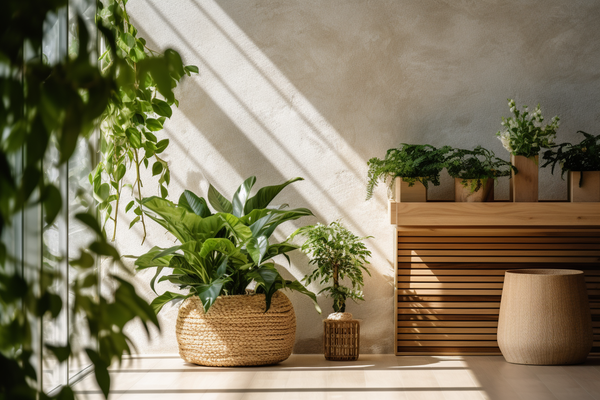
There are plenty of products out there made from sustainable materials that can elevate your interior design while keeping your eco-footprint in check. Let's dive into some of these fantastic options.
Pots Made from Sustainable Materials
If you love plants, like me, try our Kanso pots. We’ve created these from a mixture of recycled plastics and agricultural byproducts.
These pots are not only stylish but also eco-friendly, making them a perfect addition to any room. They come in various sizes and designs, so you can find one that fits your aesthetic.
Reclaimed Wood Furniture
Furniture made from reclaimed wood is not only unique but also sustainable. The wood is sourced from old buildings, barns, or even wine barrels, giving it a second life and reducing waste.
Organic Cotton Bedding
Switching to organic cotton bedding is a simple way to make your bedroom more sustainable. Organic cotton is grown without harmful pesticides and chemicals, making it better for you and the planet.
Recycled Glass Countertops
When it comes to upgrading your kitchen, we highly recommend recycled glass countertops. They're made from post-consumer recycled glass and are incredibly durable and easy to maintain.
Hemp Curtains
Hemp is a sustainable material that's perfect for curtains. It's strong, naturally resistant to mold and mildew, and biodegradable. Plus, hemp curtains add a rustic touch to your interior design.
Bamboo Kitchen Utensils
Bamboo is a fast-growing, renewable resource that's perfect for kitchen utensils like cutting boards, spoons, and spatulas. They're durable, easy to clean, and biodegradable.
LED Light Fixtures
LED lights are energy-efficient and long-lasting, making them a sustainable choice for lighting. Many stylish LED light fixtures are available that can complement any interior design style.
Conclusion
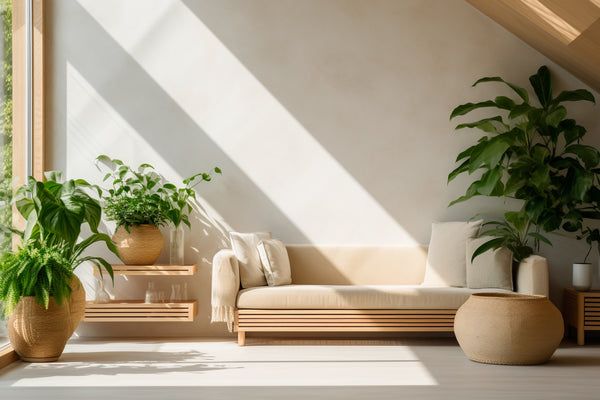
Well, folks, we've covered a lot of ground today! Remember, sustainable interior design is not just a trend; it's a meaningful way to contribute to a healthier planet and a healthier you. So why wait? Take that first step today. Whether it's switching to LED bulbs or tackling a DIY project, every little bit helps.
References
Alfuraty, A.B. (2020). Sustainable environment in interior design: Design by choosing sustainable materials. IOP Conference Series: Materials Science and Engineering, 881. https://iopscience.iop.org/article/10.1088/1757-899X/881/1/012035/meta
DISD. (2020). What is green interior design? Design Institute of San Diego. https://www.disd.edu/blog/what-is-green-interior-design-a-primer-on-interior-design-for-the-sustainably-minded/#:~:text=There%20are%20three%20fundamental%20principles,%2C%20resource%20conservation%2C%20and%20health.
Hayles, C. S. (2015). Environmentally sustainable interior design: A snapshot of current supply of and demand for green, sustainable or Fair Trade products for interior design practice. International Journal of Sustainable Built Environment, 4(1), 100-108. https://www.sciencedirect.com/science/article/pii/S2212609015000138From Waste to Resource
Our efforts and commitment to waste reduction and sustainability begin with our production process.
Plastic and agriculture wastes are repurposed and utilized through innovative transformation into a biodegradable composite material.

